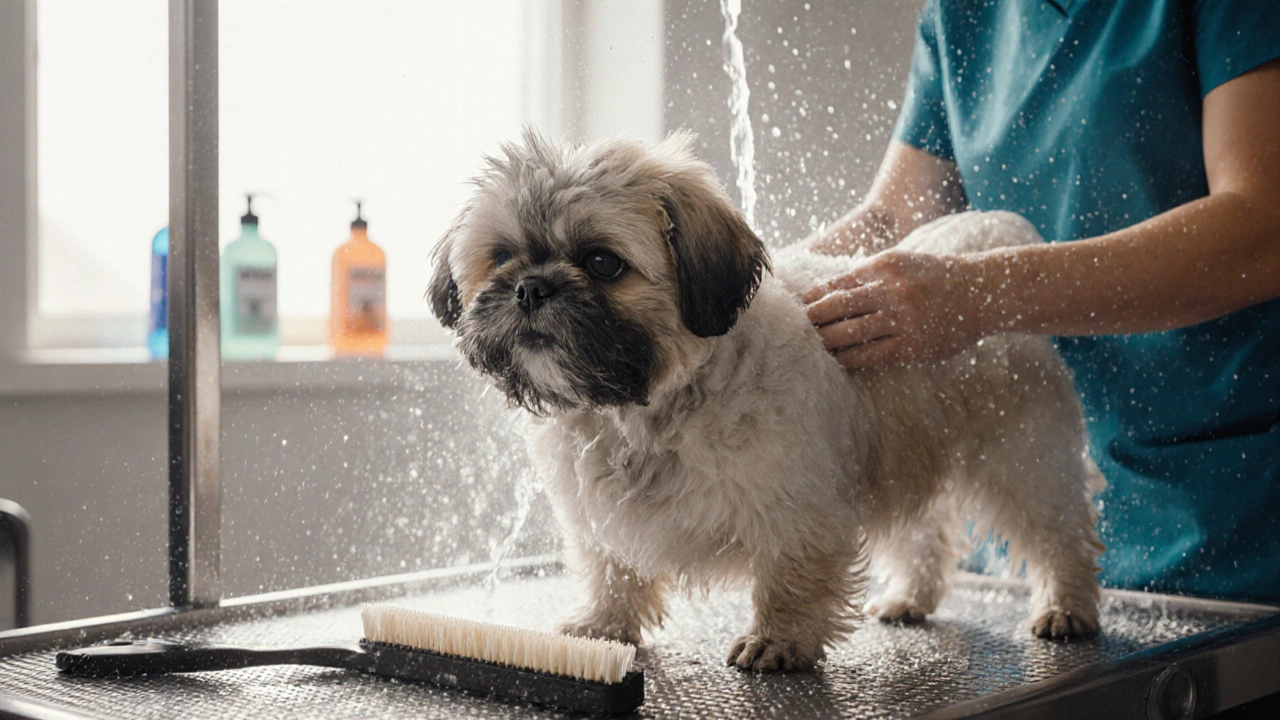Dog Bath Before Trim: Why It Matters and How to Get It Right
When you're getting your dog ready for a trim, skipping the bath might seem like a time-saver—but it’s one of the biggest mistakes pet owners make. A dog bath before trim, the practice of washing a dog’s coat and skin before clipping or trimming. Also known as pre-grooming wash, it’s not just about cleanliness—it’s about safety, comfort, and professional results. Dirt, oils, and tangles don’t just look messy; they can clog clippers, irritate skin, and make the whole process harder for your dog and the groomer.
Think about it: if your dog’s coat is matted and dirty, the clippers will drag instead of glide. That means more heat, more tugging, and more stress—for both your pup and the groomer. A clean coat lets blades work smoothly, reducing the chance of nicks or burns. Plus, washing helps reveal hidden skin issues like rashes, hot spots, or fleas that might get missed under a dirty coat. Many professional groomers dog grooming, the process of cleaning, trimming, and maintaining a dog’s coat and hygiene insist on a bath first because it’s the only way to do a proper job. It’s not a luxury; it’s a requirement.
And let’s talk about dog anxiety during grooming, the stress or fear dogs feel when being clipped, brushed, or bathed. If your dog already hates the groomer, a dirty, tangled coat makes it worse. Imagine being forced into a machine while covered in mud and debris—that’s what your dog feels. A gentle bath beforehand helps calm them. It’s a ritual, not a chore. Warm water, a familiar scent, and a little praise can turn a scary experience into something predictable and even soothing.
Not all dogs need a full bath every time, but most need at least a rinse. Long-haired breeds like Shih Tzus or Poodles? Absolutely. Short-haired dogs like Beagles or Labs? Still yes—if they’ve been rolling in mud, grass, or dead leaves. Even if you bathe your dog weekly, a quick pre-trim rinse makes a difference. Don’t just spray them off—use a dog-specific shampoo, rinse thoroughly, and dry completely. Wet fur can hide mats, and damp skin breeds irritation under clippers.
Some owners think they can save money by skipping the bath and doing the trim themselves. But without a clean base, you’re more likely to mess up the cut, cause discomfort, or even need a second trip to the groomer. That’s not saving money—it’s wasting time and money. And if your dog gets traumatized by a bad experience? That’s harder to fix than a dirty coat.
You’ll find plenty of advice online about dog grooming tools, brushing schedules, and how to handle a nervous pup. But the foundation? It’s always the same: clean, dry, tangle-free coat. That’s the first step in every good grooming routine. The posts below cover everything from how often to bathe your dog, what calming aids groomers use, how to tell if your dog’s coat is healthy, and even what to do if your dog hates the dryer. This isn’t just about looking good—it’s about keeping your dog safe, comfortable, and healthy. Let’s get into the real details that make a difference.
Do Dog Groomers Wash or Cut First? The Right Order for a Safe, Clean Groom
Dog groomers always wash before cutting because it's safer, more effective, and healthier for your dog. Dirty fur hides skin issues, clogs clippers, and leads to uneven cuts. Washing first ensures a clean, precise groom.
